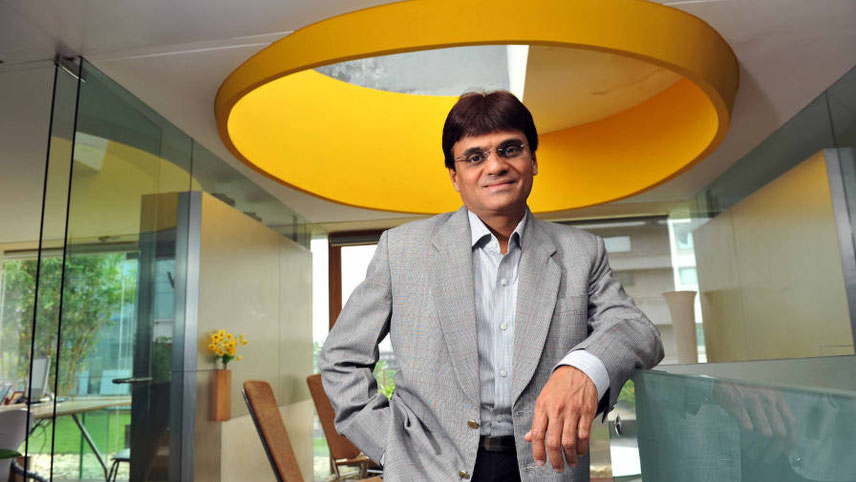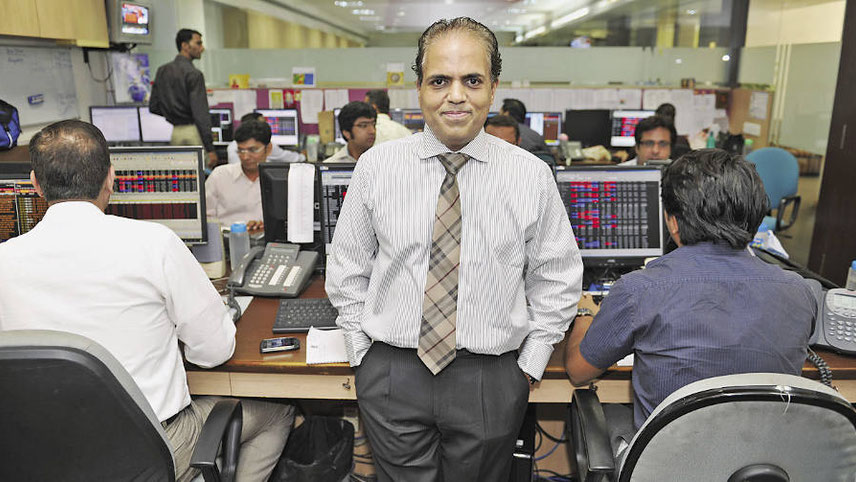-

We look at the macro themes
Deven Choksey founder & MD, KR Choksey Investment Managers
Structural changes
Business India spoke to a cross-section of experts in the stock market to find out what strategies are being followed by them, while handling turnaround cases. “We look at the macro themes,” says Deven Choksey, founder & MD, KR Choksey Investment Managers. “Last year, when crude oil prices started firming up, we surmised that the next boom would be in metals. Similarly, when prices started firming up in specialty chemicals, we zeroed down to UPL and Supreme Petro, besides Reliance Industries. This was the time we felt that there were structural changes taking place,” Choksey adds. “Currently, we see companies in the energy distribution segment using digital technology, which is expected to be successful. So, companies like Siemens, ABB, Schneider and Sterlite Technologies are expected to do well. Tata Power is also one good example. So are companies like Bosch and Minda in auto ancillaries, where technology is used extensively. They own technology that can be embedded in the assembly lines of original equipment manufacturers.” A study of macro trends, according to Choksey, helps in zeroing down on a specific company.
Dilip Bhat, joint MD, Prabhudas Lilladher, another top-ranking expert in equity markets, concurs. “We look at the macro sectors, before concentrating on the top stocks in each sector. In the case of steel, our firm was able to identify the sector earlier than the markets, because steel prices had started moving up and operating leverage had come into play. Higher capacity utilisation and better prices had helped in achieving better EBIDTA and PAT.
Good management will utilise cash flows to reduce debt drastically. The quality of management is always important, according to Bhat. Otherwise, when an industry turns around after several years, a few promoters may be tempted to take money out, privately. Bhat is of the opinion that ferrous and non-ferrous industries will see a firm trend over at least three to four years, while other experts believe it could go up to seven years, on the premise that major economies, in particular, the US and the EU, go in for funding infrastructure projects. SAIL and JSPL were the stocks the firm had identified early on.
Bhat has a different view on midcaps and small caps. Unless these companies have the potential to make it to large caps, it does not make sense to look at them. He is of the opinion that, in a turnaround, one has to look at the bandwidth of the management and its vision to grow big. Otherwise, midcaps will always remain midcaps and small caps will stay in the same category. One has to see the matrix of ‘good management, good business’ or ‘bad management, bad business’ and ‘bad management, good business’ before taking a call.
-

Good management will utilise cash flows to reduce debt drastically
Dilip Bhat, Joint MD, Prabhudas Lilladher
Of course, in a market, everyone has his own view. One may feel that a company is under-valued, another would say it is over-valued, while a third may find it fairly valued. “We look at the earnings growth of the companies we invest in – not necessarily quarter on quarter, but regularly enough to see if the earnings can be doubled over a five-year period,” says Sunil Singhania, founder, Abakkus Investment Managers, who goes on record to state: “We avoid investing in loss-making companies, unless we feel they have the ability to generate positive cash flows.”
In the case of CG Power, Singhania feels that, unless one has information about a change in management – in this case that the Murugappa group would be buying in – it would not have been possible to zero down on the company. He follows a bottoms-up approach. Abakkus Opportunity Fund I, which generates alpha returns, has amongst its top 10 stocks, companies like Route Mobile, Acrysil and ION Exchange. The fund had Jindal Stainless Steel (Hisar), a fundamentally sound company that is in the process of being merged with Jindal Stainless Limited – the latter, a clear turnaround case. Abakkus’ returns on a yearly basis were 102-121 per cent – twice that of the returns provided by the mainline indices.
“Investors, instead of focussing on indices, should focus more on individual stocks,” said Bharat Shah, executive director, ASK group. “Wealth creation is made possible by the stocks you hold and not the movement of the Sensex.” The point is that individual investors can research non-index shares, which hold good potential for growth.
This holds true not only for stocks, but even for mutual funds. “I would look at PSU stocks as prime candidates for rerating,” says Vijay Mantri, another smart investor and co-founder, JRL Money. “The government has made its intentions clear about divesting control and, this time, it would be more a case of getting strategic buyers, rather than going for divestments through capital markets.”
Mantri, who invests largely in mutual funds, feels that international investments should be part of a smart investor’s portfolio. As against US companies, which have given returns of more than 20 per cent in the recent past, European funds are lagging, at 6-7 per cent returns. So, European funds hold more potential, he says.
With commodities on the rise, Mantri had earlier advised on investing in DSP Natural Resources & New Energy Fund, which had given returns of over 112 per cent. In the power sector, he favours funds such as Nippon Power or DSP Tiger. His personal opinion is that, once the problems relating to Covid abate, personal travel (as compared to business travel) will pick up and industries like aviation and hotels will start flourishing.
-

We avoid investing in loss-making companies, unless we feel they have the ability to generate positive cash flows
Sunil Singhania, Founder, Abakkus Investment Managers
Jyoti Jaipuria, another astute investor, who is founder & MD, Valentis Advisors, and manages a PMS Fund of about R350 crore, gives a different perspective. “We follow the MtM approach (Macro to Micro) in identifying stocks. Turnarounds can happen when some structural changes are visible in a sector, like in the case of sugar, which was looked on as a cyclical industry till ethanol came into the picture and created a stable earning stream. Secondly, he says, one has to follow changes in the economy and adopt a sector-specific approach.
In the case of commodities like cement, for instance, new capacities are added at one go, but demand tends to grow at a slower pace. When the economy picks up, these stocks tend to do well. Like Mantri, Jaipuria too feels that turnarounds can be seen in airlines and hotels, besides cinemas and shopping malls. One has to follow a bottoms-up approach in identifying stocks. Companies in which there is a huge cost structure involved, and in which management, during the recovery phase, pares off costs or sells some divisions, are ideal for turnarounds.
Not an easy task
The most recent example is the case of Crompton Greaves Consumer, where Advent took over the division from the CG group. Advent had taken a stake in DFM Foods, a Delhi-based company, last year.
Spotting turnarounds is by no means an easy task. Some investors are not able to spot them early and normally come in when the stocks have already reached their full potential of growth. Like in most market cycles, many retail investors are left with the deadweight and may well have to wait till the next bull cycle to offload it. Many feel that this time it will be different, but it is the same story across cycles.
Corrections and trend reversals are part and parcel of stock markets – a trend visible since the 1990s. While it is difficult to say how long the current bull cycle will last – perhaps one, two or even four years – corrections are bound to happen. Risk has to be taken into account in the pursuit of getting multiple baggers, which give alpha returns.





































